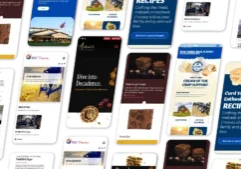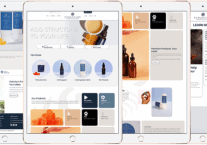How to Market to People Not Like You
A great book for more focused marketing on customer values and diversity, which can mean lifestyles, priorities, levels of affluence, cultural values, etc.
By Tasha Stukes & Rhonda Negard
If you’re looking for a quick and actionable marketing book, How to Market to People Not Like You is an excellent choice. Author Kelly McDonald guides readers toward smart tactics for reaching out to diverse customer groups and provides vivid examples of understanding values to better serve customers.
Reaching new customers has changed in the marketing world. Traditional marketers use a “spray and pray” approach. This is a wide net used to catch a few customers.
In How to Market to People Not Like You, Kelly McDonald talks about “narrowcasting” to reach out to customers and encourages businesses to stop targeting the “general market”. Narrowing the customer focus is more effective for getting your message out.
Let’s break down some important points from How to Market to People Not Like You.
First, step out of your comfort zone.
Researching potential markets will help discover who benefits from what you offer. Take time to learn about differences in the priorities, lifestyles, and values of potential customers. As Kelly points out, people tend to spend money on things they care about.
View customer purchases from a different perspective. This is a great start to finding and marketing to your ideal customer.
Second, get to know the customers you’re NOT getting (but should be).
Listening to people will help you discover their values. The best way to listen…is to ask. It’s that simple. Talking to potential customers is how many large companies learn who to market to.
- Listen to complaints. A complaint tells you two things: what customers don’t like or want…and what they do.
- Understand that the way we receive information shapes us all. Understanding how potential customers choose to receive information is key.
Different generations are a perfect example. Baby Boomers grew up on television as their primary information source. Millennials have grown up with smartphones as an instant information source. While most people have smartphones today, not everyone prefers receiving information that way.
Kelly uses the banking industry as an example. Banks benefits from having online banking for customers that prefer independent transactions. They also use physical locations to assist customers who prefer interacting with bank tellers.
This is a perfect example of validating the wants and needs of different customers.
Gain a better understanding of what customers want. Learn about them. Ask questions. Listen to their compliments and complaints. This is better than hoping to hit the nail on the head with your marketing efforts.
Next, tweak products and services to meet customer needs.
To reach a new customer group, you may need to tweak products or services. Take an honest look at what your business is offering. Ask yourself if what you have will benefit a new community of customers.
The book uses bifocal eyeglasses as an example. As style-conscious shoppers, half-moon bifocal lenses weren’t desirable to Baby Boomers. Eyewear industry leaders took notice. They created a new product to solve the problem…bifocals without the half-moon appearance.
Then, be ready for customer service and sales.
Look at your business through the “lens” of your target customer. Discover ways to make it easier for them to do business with you. Your sales and customer service teams need to be ready to work with new customer groups.
To help the process along, ask yourself these questions:
- What areas of business, departments, and processes will a customer encounter?
- Are you set up, across all areas, to serve this new target customer market?
Put yourself in your potential customer’s shoes. Think of what the experience will be like for your target market.
Additionally, you’ll need to develop marketing strategies that will speak to customer values.
Each customer group has unique needs. A valuable marketing approach uses relevant communication.
Relevant communication can come in many forms:
- Use certain slang, phrases, or words to “speak their language”
- Provide a product/service that fits the customer’s lifestyle
- Marketing in their native tongue (which implies a readiness to conduct business in their language)
Be mindful if you are creating marketing in different languages. The last thing you want to do is confuse a new target audience with phrasing that is not culturally relevant.
Also, use technology to reach different customer groups.
In today’s digital world there are many ways to reach out to people not like you. Using technology to interact with customers is helpful for research, communication, and retention. There are many free and inexpensive tools for digital marketing. Below is a short list of options.
- Your Website
- Social Media
- Email Marketing
- Newsletters
- Mobile Marketing
As Kelly states in the book, every business should have a website. Your website is an excellent marketing and advertising tool. People who visit are already interested in you. The key is to give them a good reason to stay.
Remember to deal with questions and criticism.
The world is a full of diversity. Yet, people may criticize or question you for reaching out to a different customer group. To address negative feedback, think about how you will respond in advance.
Prepare your employees for the transition. A unified voice is the best way to handle new marketing efforts.
- Review why you’re targeting the new customer group.
- Explain exactly what it is you expect of employees.
- Express your interest in hearing feedback (positive or negative).
- Tell employees the statement you want them to make.
It’s okay if existing customers don’t agree with your decision. Take time to express why others may benefit from your product. Explain why your new marketing efforts are a good idea. This will often help others see the transition in a reasonable light.
Lastly, the Ideal Marketing Message
How to Market to People Not Like You contains tips for marketing to several different target groups. Each chapter is full of vivid examples that drive home the focus on values and diversity in marketing.
Diversity comes in a variety of forms. From lifestyles to priorities…from levels of affluence to cultural values…the people you are marketing to have a higher chance of being NOT like you…than anything similar to you.
New customers ensure the growth and livelihood of your company. If you get nothing else out of this book, one thing is clear. The ideal marketing message is one that resonates with your target audience.
Tasha is a ghostwriter, copywriter, and content creator helping create quality sharable business-to-business and business-to-consumer content that resonates and supports the brand goals.







